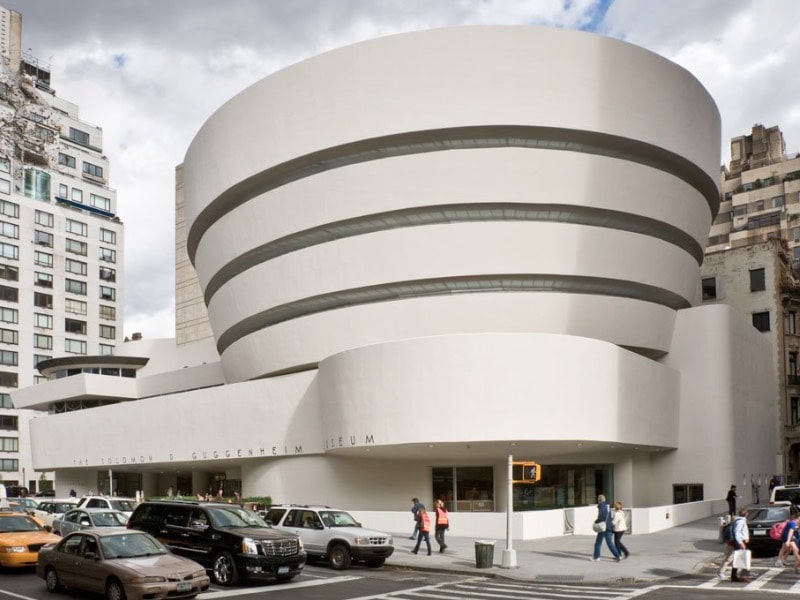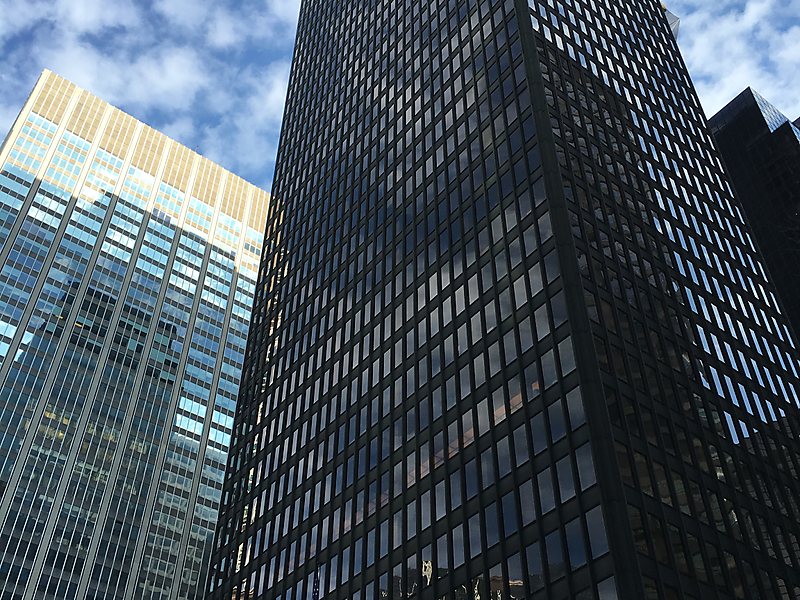Modernism in Architecture

Perhaps, this last of the famous “big styles”, which took “under the wing” almost all the architecture of the XX century. The future is here, just not yet so widely distributed. The key modernist principles were formulated. However, their development has taken place until the end of the second millennium and continues to this day. And if initially glass for modernists was a sip of freedom, today it is a way to create a safe and comfortable environment.
Objectives that define the form
It is difficult to overestimate the importance of modernism in the architecture of the XX century: almost all the currents of the last hundred years were actually either his branches, or appeared to him in contrast. And despite the worldview differences between them, it is easy to identify a number of general and fundamental principles in modernist philosophy throughout its formation and development.
First, there is nowhere to go from the notorious aphorism form follows function. In fact, it meant that the result of design is a direct consequence of the goals set, and only they together with his entourage should influence the shape of the building.
Secondly, and this largely follows from the first point, modernism is characterized by pure and simple forms – no unnecessary and unnecessary details. Not surprisingly, after the famous on the elimination of excesses in design and construction. Architects turned to the world experience of modernism, which after the Second World War, just gained momentum.
The third principle of modernism concerns the relationship to the structural elements of the building: maybe they are not exhibited, as in the hi-tech samples (which arose much later), but at least they do not try to hide, and often horizontal and vertical lines formed by the frame grid, were further emphasized.
The same honesty applies to materials that do not try to pretend to be something else. And in this sense, the three whales of modernism that emerged in the era of mechanization and industrialization, steel, of course, concrete, steel and sheet glass.
Modernism is from the word “modernization.”
There are several versions of why modernism was born just when it was born, and why it turned out to be so. On the one hand, some historians see this as a social aspect, directly linking modernism to society’s desire to be modern, modern, and therefore enlightened. In their view, modernism emerged as a result of social and political revolutions, as ‘modern architecture for modern man’.
The manifestation of fatigue from excessive and unconditioned decoration, mixing the techniques of all the classical styles in a row, and became modernism.
In fact, everything that was born as a response to modernization, became part of the modernist movement. Including, of course, the modernization of construction: the industrial revolution, after which it was possible to mass produce cast iron, steel and glass panels, gave impetus to the emergence of new construction technologies.
Progress motors: cast iron, iron, glass, reinforced concrete
In fact, the key events preceding the spread of new building materials and, to some extent, the most modernist architecture took place long before. In the 1830s, Eaton Hodgkinson was the first to use cross beams, having studied the practical properties of cast iron and iron, and since then cast iron and iron structures as building frames have become increasingly popular.
History is made by individuals.
As early as the early 1900s, the first to suggest that the house should be an extension of the environment and that its form should derive from the specific initial conditions of the task at hand. The quintessence of this idea can be considered the famous “House over a Waterfall”,, where the waterfall became a structural part of the house.
On the outside, the museum is a concrete spiral, but on the inside there is a light-filled, glazed inner courtyard. Visitors climb up the elevator and then gradually descend the ramp, successively inspecting the exposition placed on the walls.

Much bolder used glass by the architects of Soviet constructivism, who in the beginning of XX century found themselves at the forefront of world architecture. The same masterfully worked with space and light, without fear of large windows and extensive glazing. Although he did not forget about the climatic features of the middle strip, while some of his fellow countrymenat times did not take this into account.
Van der Rohe and Johnson Glass Houses
By that time Mies had already built his famous German pavilion in Barcelona, where he finally realized the idea of a glass wall. But since the 20s van der Rohe dreamed of a glass skyscraper – and America, once again justifying its title of “country of great opportunities”, allowed the architect to implement it.
The private house of Neutra, by the way, is often called the first house on a steel frame in the United States. Is it worth saying that a large part of the surfaces on this frame, fixed, is made of glass!
The house is as open as possible to its surroundings: all four walls are glass, and inside it is planned as a single room. The floor is finished with heavy travertine slabs, but the ceiling slab, although not very heavy, is made of the same thickness as the floor: this makes it seem as if the vertical columns that permeate the house are not made so much for support as to keep the building floating to the ground.
Thus, the idea of transparency, for which van der Rohe was so committed to glass, in the Farnsworth house is brought to the absolute. And the idea that mass-produced products are capable of generating beautiful architecture for worthy individuals appears in all its glory.
However, did use the house for some time, although he then moved to one of the neighboring buildings and the glass pavilion was identified as a place of entertainment. Just as van der Rohe had intended, in fact, to create the concept of a showcase house. And then the man who built the glass box became one of those who, figuratively speaking, first threw a stone at it.
Buildings are increasingly traceable historical reminiscences, and from the international style of the American architect has directly stepped into postmodernism. But what modernism has become, having reached its apotheosis in the and then quickly found itself in disgrace, is the subject of another.
Glass as the medium of modernist ideas.
We tried, at least superficially, to trace how modernism was born, what its basic principles were and how they were reflected in their work. The time has come to sum up why glass is so important in all this history with modernism.
The first and most obvious: at a time when architects tried to minimize the means of expression, glass became the material that has outgrown the boundaries of the window and won the whole plane of the facade (technically was able to do this), leaving visible only steel or concrete frame.
The second important point is transparency. Is it possible to demonstrate in an even more explicit way the function that the modernists so cared about when looking outward.
And finally, transparency in the sense of light permeability, because light is one of the architect’s main tools. A large number of it visually pushes the boundaries, and no longer just the interior becomes part of the landscape, but the man himself merges with it.
The reasons why modernism eventually came to naught are also quite clear. The international has become standard, the universal – standard. The power of concrete boxes and glass towers quickly began to irritate even those who once had a hand in their construction. Some hit the hi-tech, looking for decoration in the structural details.
But, as they say, modernism is dead – long live modernism. Today, thanks to the fact that glass acquires new properties, new meanings are available to glass architecture. And modernism of the XXI century has grown in addition to the old new ideas: about respect for the environment, independence from non-recoverable natural resources, the scale of man in terms of psychological and physical comfort.

